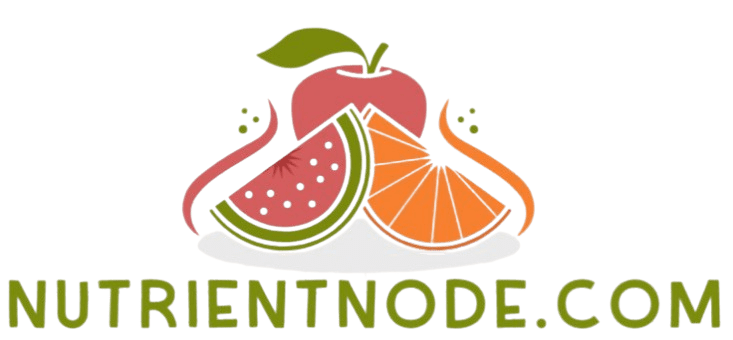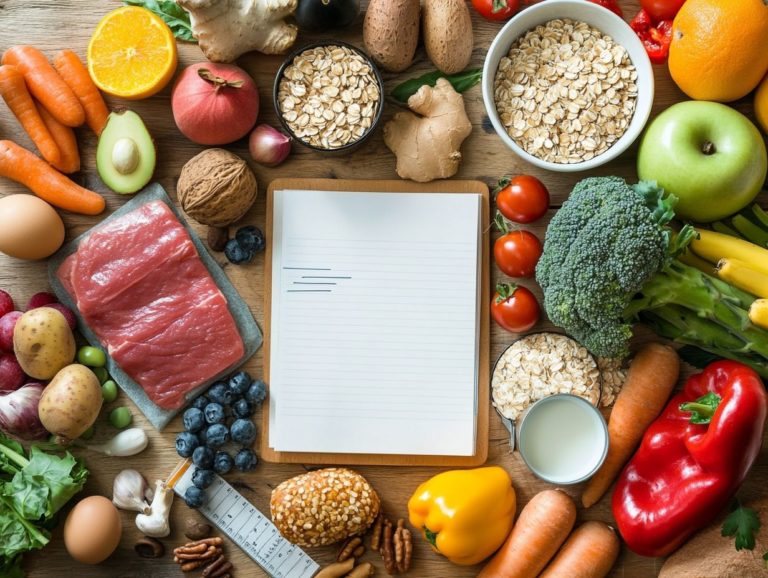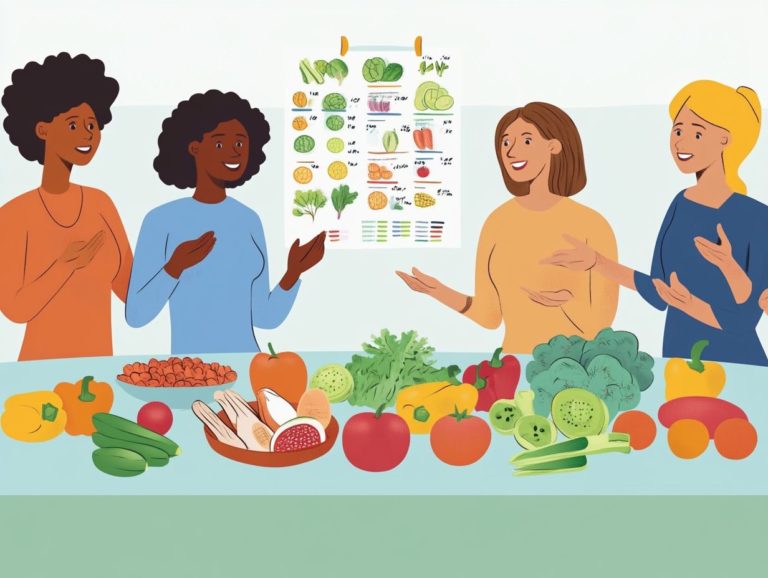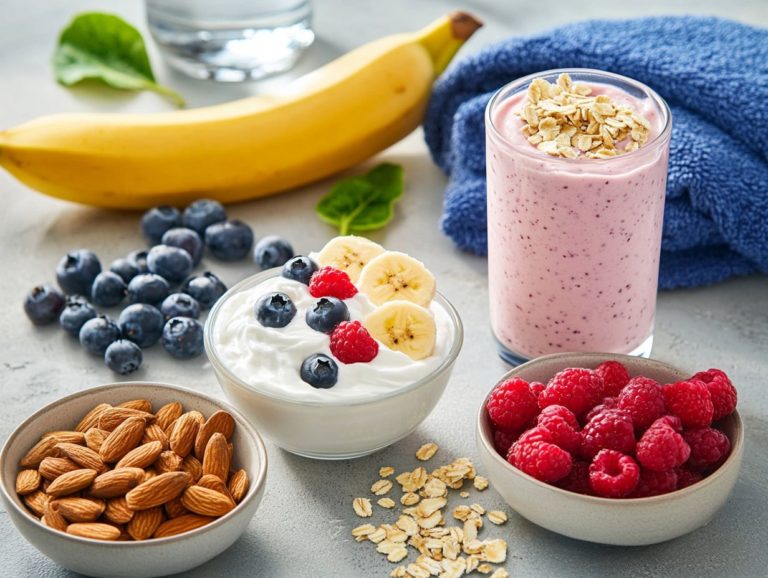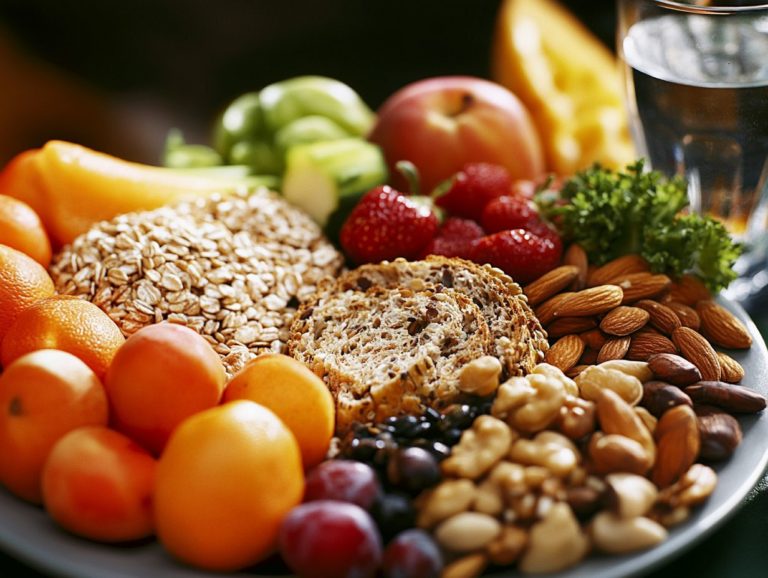How Do I Read Nutrition Information?
Understanding nutrition labels is crucial for your health. Let s dive in and learn how to make smarter food choices!
Navigating the realm of nutrition information may seem daunting, yet grasping it is essential for making informed, healthier choices.
This article delves into the essence of nutrition information and its significance, providing you with a roadmap for interpreting nutrition labels with confidence.
You ll explore key components, uncover common misconceptions, and acquire essential tools to identify nutrient deficiencies while comparing products effectively.
By the conclusion, you ll be equipped to make empowered dietary decisions that align seamlessly with your health goals.
Contents
Key Takeaways:
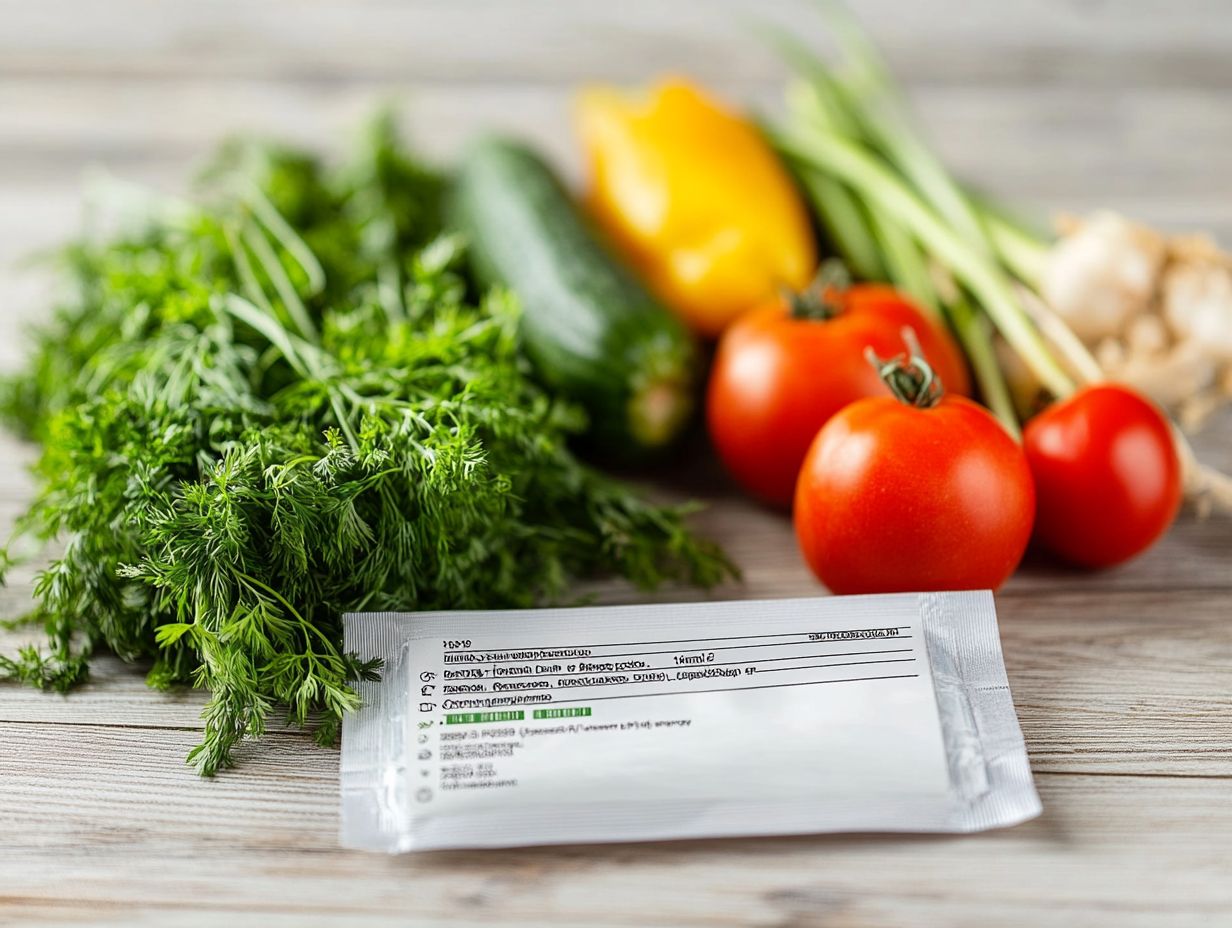
Knowing how to read nutrition labels empowers you to make healthier food choices every day!
Key components of a nutrition label include serving size, calories, and % daily value.
Use nutrition information to compare products and identify nutrient deficiencies, and beware of misleading claims.
Understanding Nutrition Information
Understanding nutritional labels is essential for making informed food choices that support a balanced diet and enhance your overall health.
Nutrition labels offer vital insights into food products, showcasing important details like calories per serving, fat content, and sugar levels.
By familiarizing yourself with these components, you can learn to read how much you eat and make healthier choices that align with your unique dietary needs and preferences.
What is Nutrition Information?
Nutrition information is a treasure trove of data found on food labels, providing insights into calories, fat, sugar, and salt content, along with dietary fiber and a comprehensive ingredients list.
This information is essential for guiding you toward healthier dietary choices, enabling you to make informed decisions about what you consume.
By grasping the important nutrients in your food, you can evaluate its quality, which influences your overall well-being.
For example, understanding sugar levels can help you curb excessive consumption, while recognizing the significance of dietary fiber can enhance your digestive health.
Therefore, learning to read nutrition facts optimizes your personal health and encourages healthier eating habits that align with your unique lifestyle goals.
Why is it Important?
The significance of nutrition information is paramount, as it profoundly shapes your food shopping habits and dietary choices.
By learning to read and interpret nutrition labels, you can make informed decisions that align with your health objectives.
This skill is especially important if you have food allergies or sensitivities, enabling you to steer clear of ingredients that could provoke adverse reactions.
Being well-acquainted with nutritional guidelines allows you to choose products rich in beneficial nutrients while minimizing harmful additives, promoting your overall well-being.
A clear understanding of these labels can enhance your meal planning, boost your energy levels, and reduce the risk of chronic diseases, ultimately paving the way for a healthier lifestyle.
Interpreting Nutrition Labels
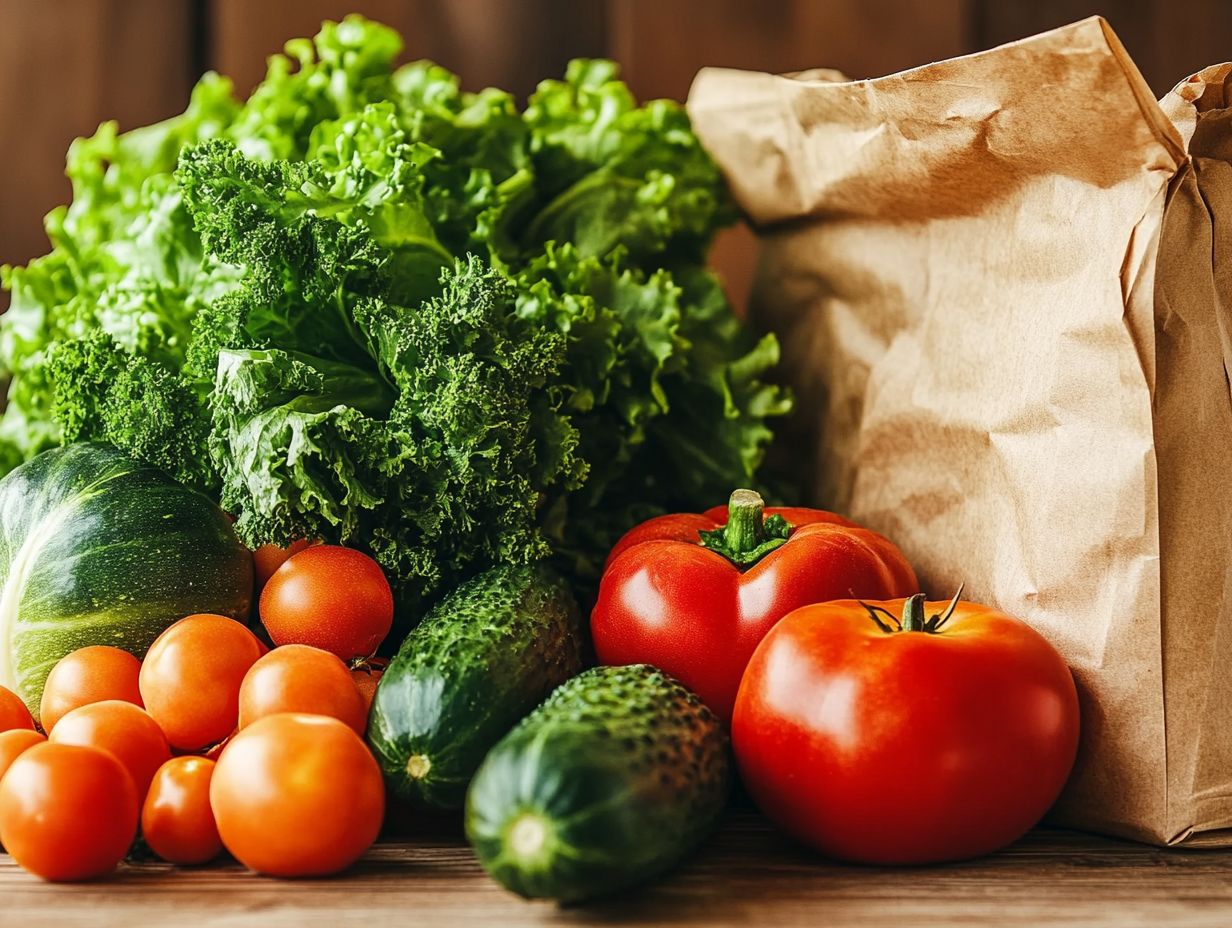
Interpreting nutrition labels effectively is crucial for grasping the nutritional value of food products and making informed dietary choices.
These labels offer vital insights, such as serving size, caloric intake, and percent daily value.
This information enables you to assess how a food item fits into your overall diet.
In an era where added sugars and processed foods are prevalent, learning to read these labels helps you balance nutrients and prioritize healthier food selections.
Key Components of a Nutrition Label
The key components of a nutrition label include vital elements such as calories per serving, fat content, saturated fat, sugar content, salt content, and an ingredients list. Each component plays a crucial role in evaluating food quality.
These elements help you make better food choices. For instance, understanding the caloric value helps you manage your daily energy intake, while knowing about fat content can significantly impact your heart health. Saturated fat deserves special attention, as it is often linked to higher cholesterol levels.
Paying attention to sugar content is equally important; excessive sugar intake can lead to various health issues, including obesity and diabetes. The salt content shows you the risks of high blood pressure, while the ingredients list reveals preservatives and additives, enabling you to avoid unwanted chemicals and allergens.
Together, these components create a comprehensive picture of a food product s nutritional integrity, guiding you toward healthier choices.
How to Read Nutrition Information
Reading nutrition information is all about grasping the essentials: serving size, caloric intake, and percent daily value. To further enhance your understanding, it’s beneficial to learn how to recognize nutritional labels, as these elements are crucial for making informed decisions about your eating habits.
By understanding these foundational components, you can make choices that align perfectly with your dietary goals. Start by examining the serving size; this figure dictates how much of each nutrient you re actually getting.
Next, pay attention to the total calories knowing how these fit into your daily requirements is vital for maintaining a balanced diet. The percent daily value indicates how much a nutrient contributes to your overall daily intake, allowing you to track your carbs, proteins, and fats carefully.
Food manufacturers play an essential role here, as they must provide accurate and transparent nutrition labels. This enables you to adopt healthier habits and make smarter choices on your journey to well-being.
Using Nutrition Information to Make Healthy Choices
Leveraging nutrition information allows you to make informed choices that resonate with your specific nutrient needs and lifestyle preferences.
By comparing food products based on detailed nutrition facts, you can effortlessly select options that are rich in dietary fiber while minimizing sugar, fat, and salt ingredients that can detract from a balanced diet.
Engaging with nutrition experts can elevate your understanding even further, guiding you toward food products that align perfectly with your health goals.
Identifying Nutrient Deficiencies

Identifying nutrient deficiencies is crucial for your health and wellness, and nutrition information plays a key role in this journey.
By closely examining nutrition labels, you can uncover areas in your diet that might lack vital nutrients. Take dietary fiber, for example it’s a common shortfall that can lead to digestive issues and more serious health concerns.
To address this, turn to foods like whole grains, legumes, and fruits such as apples or bananas, which are excellent sources to help you bridge that gap.
If your label readings indicate low amounts of essential vitamins like B12 or iron, consider adding options like lean meats, fortified cereals, and leafy greens to your meals.
By paying close attention to these labels, you empower yourself to make healthier choices and promote long-term well-being.
Comparing Products for Better Nutrition
Comparing products using nutrition labels is essential for enhancing your nutrition and making healthier eating choices. By diving into these labels, you can easily pinpoint key elements like calorie counts and fat content, both of which significantly influence your overall health.
It s crucial to focus not just on the total calories but also to differentiate between types of fats saturated versus unsaturated to truly grasp their effects on heart health. Keep an eye out for added sugars, sodium levels, and serving sizes, as these factors can create misleading impressions if you don’t evaluate them carefully.
A useful strategy is to compare similar products side by side. This approach enables you to make more informed decisions and select options that align seamlessly with your dietary goals.
Don’t wait understanding these labels can transform your health! Start reading nutrition labels today to take control of your health!
Common Misconceptions about Nutrition Information
Common misconceptions about nutrition can create confusion and lead to poor dietary choices. These issues are often exacerbated by misleading claims from food manufacturers and the allure of processed foods.
Navigating this landscape is essential for your health! Make informed decisions that truly benefit you.
Debunking Myths and Misleading Claims
Debunking myths and misleading claims surrounding nutrition information is crucial for enabling you to make informed food choices!
You might have heard that all processed foods are bad, but that s a common misconception. In fact, processing can sometimes enhance the nutrition value of a product. Take frozen vegetables, for instance; they re harvested at their peak ripeness and quickly flash-frozen to help retain their nutrients.
This method makes meal prep a breeze! Some may believe that cutting out carbs entirely is the key to weight loss. However, healthy whole grains are essential for energy and overall well-being.
By addressing these misconceptions, you can support a balanced diet and lead to a healthier lifestyle.
Watch this informative video on nutrition tips!
Frequently Asked Questions
Here are some common questions about nutrition information.

What is nutrition information?
Nutrition information is a list of nutrients found in a food or beverage. It is typically displayed on the product’s packaging and includes details such as calories, fat, carbohydrates, protein, vitamins, and minerals.
Why is it important to read nutrition information?
Reading nutrition information allows you to make informed decisions about your diet and health. It helps you choose healthier options and understand how certain foods may affect your body.
Where can I find nutrition information?
Nutrition information can be found on the nutrition label of most packaged foods and beverages. It may also be available online for restaurant menu items or on the company’s website.
How do I read the serving size on nutrition information?
The serving size is listed at the top of the nutrition label and is measured in common units, such as cups or pieces. Pay attention to the serving size, as it affects the rest of the information on the label.
What do the numbers on the nutrition label mean?
The numbers on the nutrition label represent the amount of each nutrient in one serving of the food or beverage. They are typically listed in grams or milligrams, helping you understand how much of each nutrient you are consuming.
Are there any key things to look for when reading nutrition information?
Yes, there are a few key things to look for when reading nutrition labels effectively. These include the serving size, calories, and the amounts of fat, saturated fat, sodium, and added sugars. These factors are important to consider when making healthy food choices.
